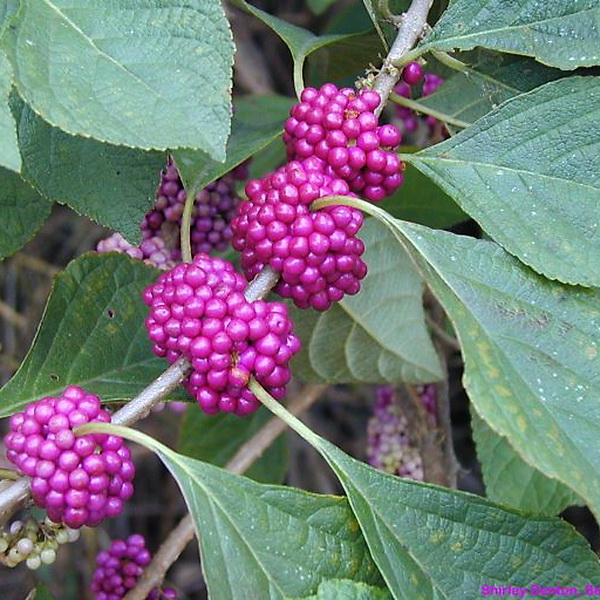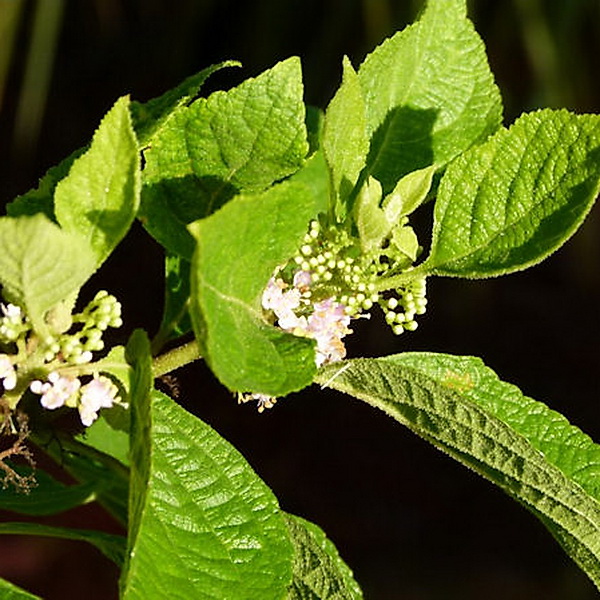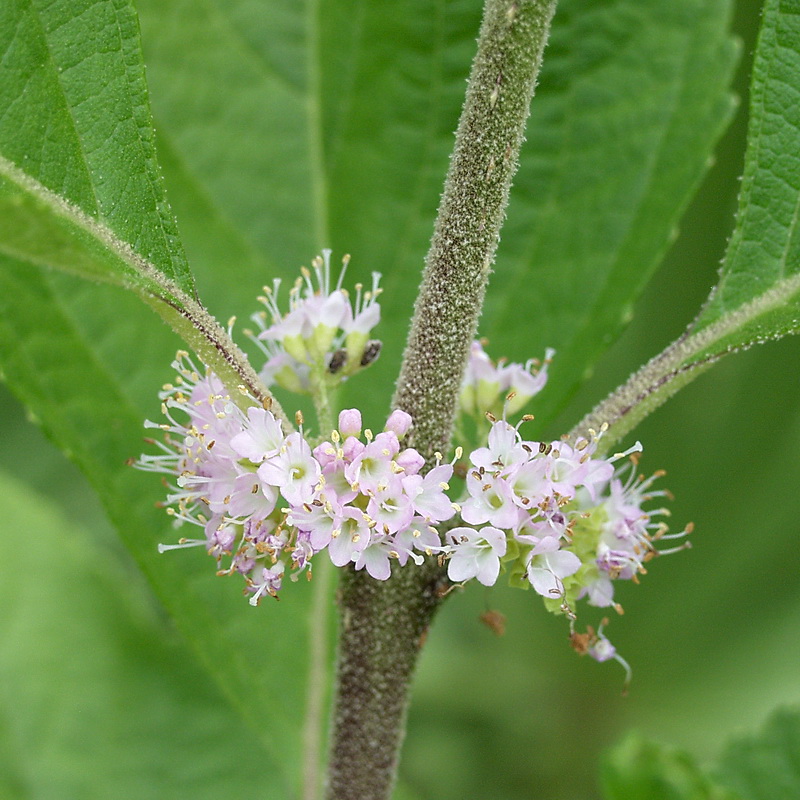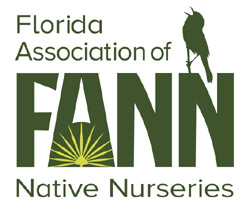Callicarpa americana
Photographs belong to the photographers who allow use for FNPS purposes only. Please contact the photographer for all other uses.
American Beautyberry
Lamiaceae (Labiatae)
Plant Specifics
| Form: | Shrub | |
| Size: | 4-8 ft tall by 3-6 ft wide | |
| Life Span: | Long-lived perennial | |
| Flower Color: | White,pink | |
| Fruit Color: | Magenta or white | |
| Phenology: | Deciduous to the north, evergreen in the south. Blooms spring-fall. | |
| Noted for: | Showy flowers, Showy fruits, Hurricane wind resistance |
Landscaping
| Recommended Uses: | Specimen plant, mass planting, casual shrub screen | ||||||||||||||||||||||||||||||||||||||||||
| Considerations: | Cut back in winter to encourage blooming and good form. | ||||||||||||||||||||||||||||||||||||||||||
| Propagation: | Seed. | ||||||||||||||||||||||||||||||||||||||||||
| Availability: | Native nurseries, FNPS plant sales, Quality nurseries, Seed | ||||||||||||||||||||||||||||||||||||||||||
| Light: | Full Sun, Part Shade | ||||||||||||||||||||||||||||||||||||||||||
| Moisture Tolerance: |
always floodedextremely dry |
||||||||||||||||||||||||||||||||||||||||||
| (Usually moist, occasional inundation ----- to ----- Somewhat long very dry periods) | |||||||||||||||||||||||||||||||||||||||||||
| Moisture Tolerance: | Usually moist, occasional inundation ----- to ----- Somewhat long very dry periods | ||||||||||||||||||||||||||||||||||||||||||
| Salt Water Flooding Tolerance: | Not salt tolerant of inundation by salty or brackish water. | ||||||||||||||||||||||||||||||||||||||||||
| Salt Spray/ Salty Soil Tolerance: | Some tolerance to salty wind but not direct salt spray. | ||||||||||||||||||||||||||||||||||||||||||
| Soil or other substrate: | Loam, Sand | ||||||||||||||||||||||||||||||||||||||||||
| Soil pH: | Adaptable | ||||||||||||||||||||||||||||||||||||||||||
Ecology
| Wildlife: |
Many bird species consume the fruit. including catbirds, mockinbirds, and robins. | |
| Insects: | Larval host for for spring azure butterflies and snowberry clearwing moths. Attracts various pollinators, especially bees. Documented bees include Agapostemon splendens, Augochlora pura, Dialictus placidensis, Halictus ligatus, Megachile brevis pseudobrevis and the none-native Apis mellifera (honeybee) (Deyrup et al. 2002). | |
| Native Habitats: | Dry mesic hardwoods, xeric hammock, scrubby flatwoods, flatwoods, disturbed dry-moist woods. |
Distribution and Planting Zones
Natural Range in Florida
USDA Zones
Suitable to grow in:
10A 10B 11 8A 8B 9A 9B
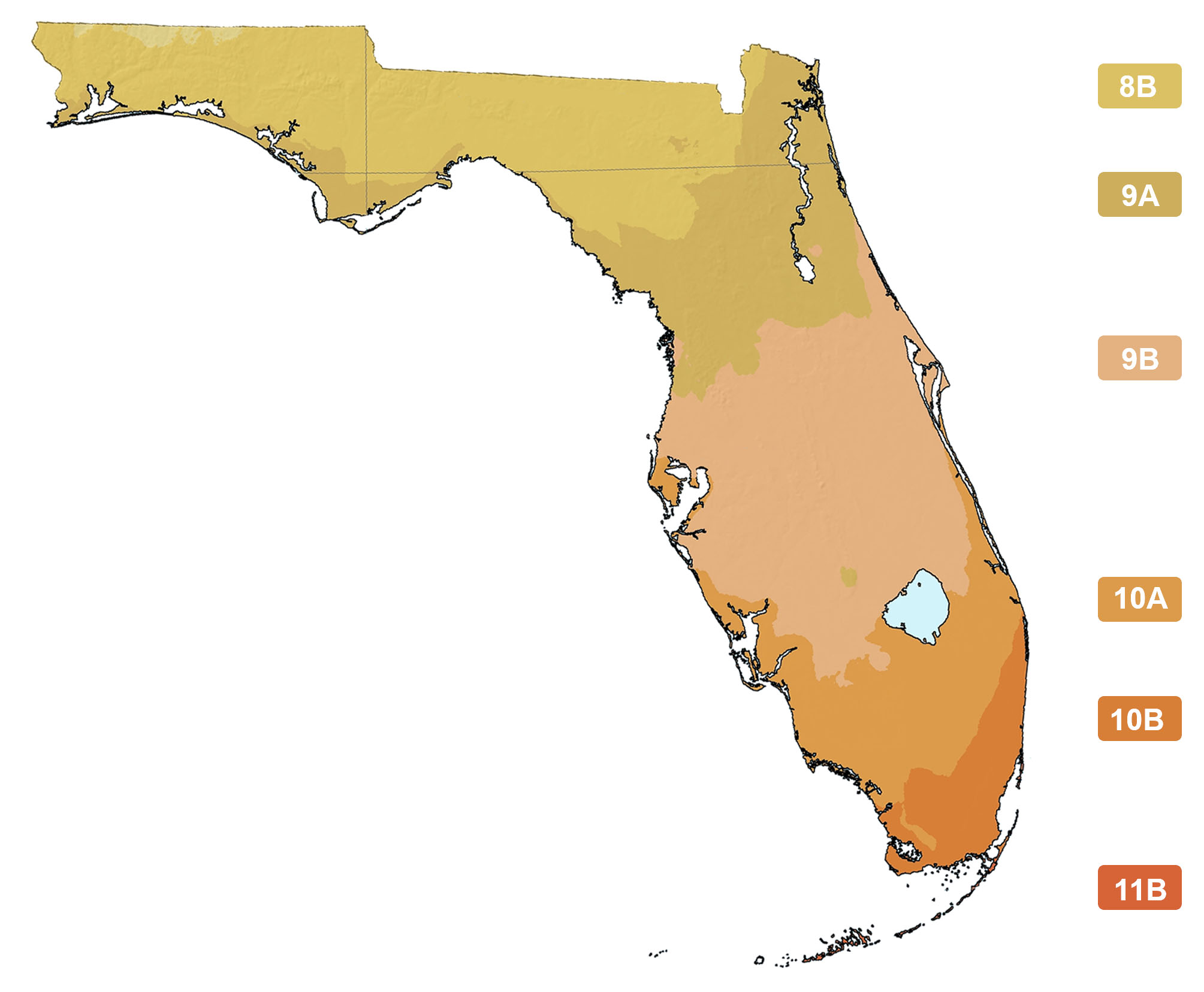
USDA zones are based on minimum winter temperatures
Comments
| Ethnobotany: | Sometimes used to make jelly which is noted for its color. There are three chemicals in the leaves that may be as effective as DEET as an insect repellant (Cantrell et al. 2005; Cantrell & Klun 2011). One, callicarpenal, apparently deters biting by the yellow-fever mosquito and the mosquito that spreads malaria. Callicarpenal and other compounds isolated from the plant also repell fire ants and ticks. | |
| General Comments: | Fruits are magenta. There is a white-fruited/white-flowered variety, uncommonly found naturally in Florida, that is sold occasionally. |




